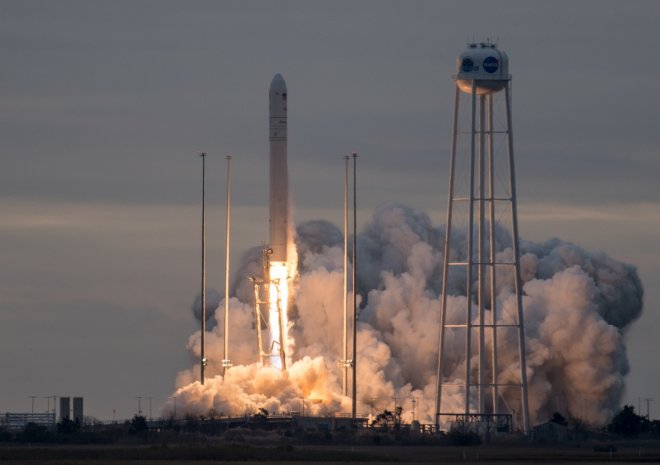
Orbital ATK's Cygnus spacecraft which took off from NASA's Wallops Flight Facility in Virginia on November 12, carrying 7,400 pounds of Cargo for the International Space Station (ISS) reached its destination at 7:15 ET (Eastern Time). Expedition 53 astronauts Paolo Nespoli and Randy Bresnik used the space stations robotic arm catch the Cygnus and installed it to the station.
The cargo spacecraft was launched at 7:19 am EST (Eastern Standard Time) on an Antares rocket from the NASA launch Pad and is scheduled to reach the International Space Station on November 14.
Joseph M. Acaba, a crewmember of the ISS had tweeted, "Pizza and ice cream on the way! Eagerly awaiting the arrival of @Orbital ATK "SS Gene Cernan" #Cygnus cargo vehicle. Packed full with #science and supplies!"
The resupply mission is meant to support dozens of new and existing investigations, including the study on antibiotic resistance, high-speed data transmission, plant growth and improved power and communication technologies.
The E. Coli AntiMicrobial Satellite (EcAMSat) mission, which investigates the effect of microgravity on the antibiotic resistance of E. Coli - a bacterial pathogen responsible for urinary tract infection in humans and animals; the optical Communications and Sensor Demonstration (OCSD) project which studies high-speed optical transmission data and small spacecraft proximity operations; Biological Nitrogen Fixation in Microgravity via Rhizobium-Legume Symbiosis (Biological Nitrogen Fixation) are the key research which are to be started on arrival of the cargo ship.
The Integrated Solar Array and Reflectarray Antenna (ISARA), a hybrid solar power panel communication solar antenna which could send and receive data to far away destinations from earth and space is also aboard the Cygnus.
The new technologies, which are to be added to the ISS would improve the life of the space station crew and will also improve the capabilities of the space station. The International Space Station had been an aboard for researchers for the past 17 years. More than 200 people from 18 countries have lived and worked there to make many advanced scientific discoveries and to demonstrate new technologies which are not possible through Earthly research.
Researchers from more than 95 countries have conducted more than 2,100 research in the unique microgravity laboratory in the Space Station.
Cygnus would leave the space station on December 4 and would deploy several CubeSats in its orbits before entering the Earth's atmosphere. These CubeSats would serve the strategic role in weather sensing and would make advanced predictions of natural disasters.
The launch of the Orbital ATK Cygnus was postponed from its scheduled date on November 11 morning when a private aircraft came within the range of the launch vehicle, Antares rocket.









